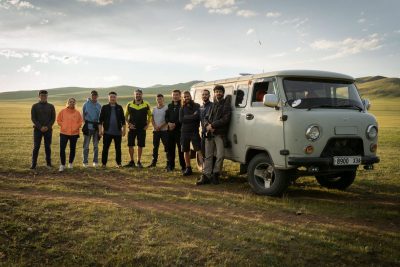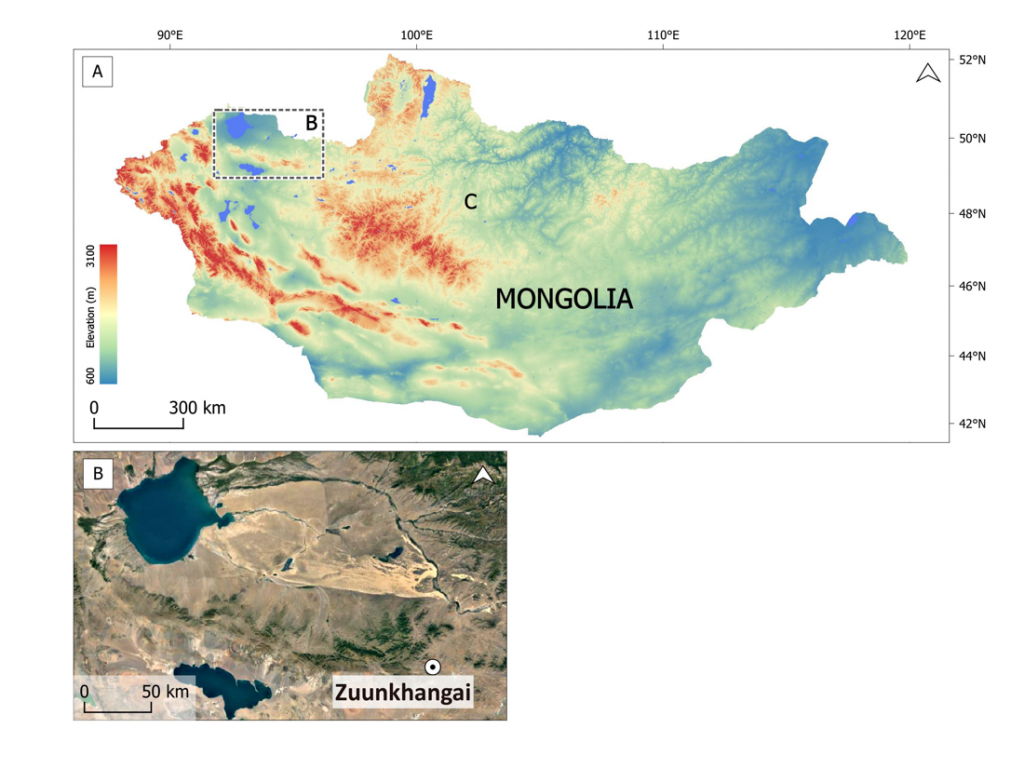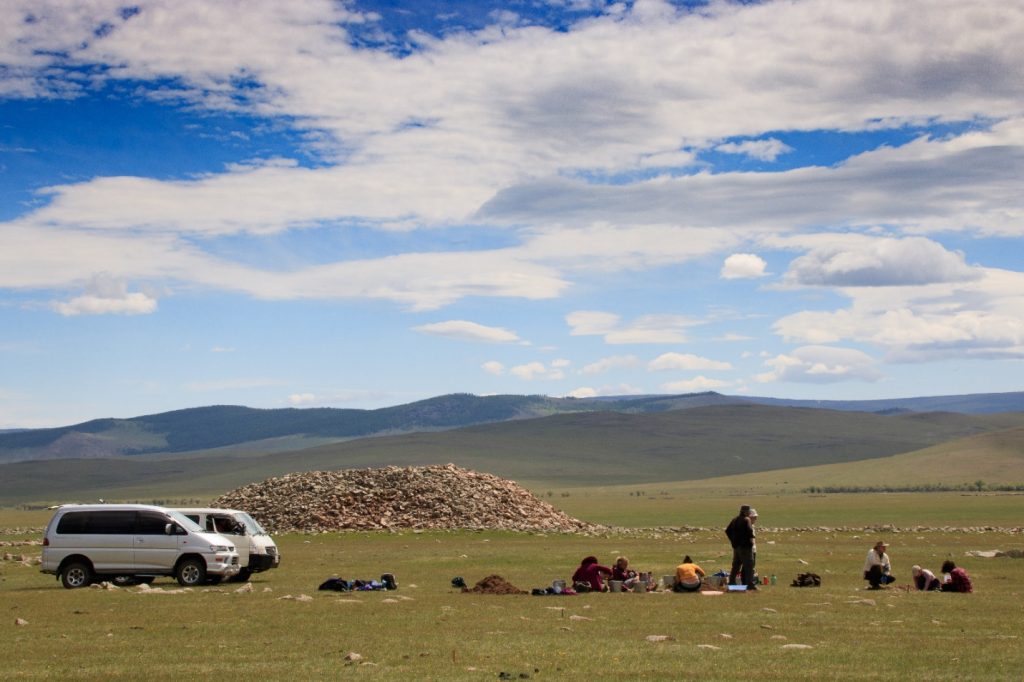
GIAP researchers get involved in a new archaeological campaign in the steppes of Mongolia.
GIAP researchers Francesc C. Conesa and Arnau Carbonell have recently left Ulaanbaatar, Mongolia’s capital, after setting up the final preparations for their field survey season starting in Züünkhangai Sum, Uvs province, in the north-western part of the country.
The archaeological campaign belongs to the research project “Arqueología del pastoralismo nómada en Mongolia”, funded by Fundación Palarq and led by Dr Natalia Egüez (University of La Laguna, Spain), which studies the microscopic and molecular elements contained in the sediments recovered from archaeological sites related to domestic spaces, that is, the places where nomadic shepherds lived during the Bronze and Iron Ages.
Along with Natalia Egüez (University of La Laguna), Conesa and Carbonell are joining an international team together with Burentugs Ganbold (National Museum of Mongolia), Javier Davara (University of La Laguna), and Javier Corso, photographer and co-founder of Oak Stories. He will provide another analytical (and hopefully more artistic) perspective on our daily routines and archaeological insights.
¡Arranca la campaña arqueológica en #Mongolia! Gracias a @FundacionPalarq por su apoyo a nuestro proyecto “Arqueología del pastoralismo nómada”. Con investigadores de @ULL, @ICAC_cat, Museo Nacional de Mongolia y @wku, @oak_stories nos acompaña documentando el proyecto 🥰📸 pic.twitter.com/z8ZDD2Vx2B
— Natalia Égüez (@thethinsection) July 6, 2022
Once everything is ready in the capital, the team traveled west from Ulaanbaatar to Züünkhangai in a c. 15h journey by car. They set up the main camp in Züünkhangai’s winter school to start the fieldwork campaign in the rich and ecologically diverse archaeological landscapes of the Züünkhangai region. It encompasses open grasslands to hilly dense forests, alluvial plains, and lakes.
This is the first on-site archaeological campaign we have carried out in Asia after the pandemic.
As in other well-known Western and Central Mongolia regions, the area is dotted with hundreds of mortuary monuments dating back to the Late Bronze Age (1200-700 BC). Small to very large khirigsuurs are perhaps the most impressive (and visible) stone mounds that attest to an early societal complexity that would eventually pave the road for the first nomadic empires in the Eurasian steppes.

The team will visit and validate previously -and remotely- detected khirigsuurs and monumental complexes. Moving from the most prominent archaeological features in funerary contexts, they will continue the previous WMAP geo-ethnoarchaeological approach in the area. The team will systematically survey potential seasonal herder campsites and habitational sites. In that regard, the WMAP team recently published the first study on a multi-layered pastoralist habitation site in Züünkhangai that shows a recurrent seasonal winter occupation from the mid-Holocene up to the present day. Have a look here!

This field season arises as a new research collaboration between ICAC and the Archaeological Micromorphology and Biomarkers Laboratory of the University of La Laguna (Canary Islands, Spain), within the framework of the project “Archaeology of nomadic pastoralism: the invisible imprints of domestic spaces” led by Dr Natalia Égüez (University of La Laguna) and generously funded by the Palarq Foundation.
The project is part of the Western Mongolia Archaeological Project (WMAP), an ongoing and long-lasting research initiative of the National Museum of Mongolia and the Western Kentucky University led by Drs Bayarsaikhan Jamsranjav and Jean-Luc Houle, respectively.
This project led by Dr Natalia Égüez from the University of La Laguna is a collaboration between this institution, the National Museum of Mongolia and the Catalan Institut of Classical Archaeology. It also has the participation of reserachers from Institución Milà i Fontanals de Investgación en Humanidades del Consejo Superior de Investigaciones Científicas (IMF-CSIC) in Barcelona, the Western Kentucky University (USA) and the University of Oulu (Finland).
🤩We got news from Mongolia!
If you haven’t been following the updates by @fc_conesa, @ArkiThe & @thethinsection, learn more about the campaign:
Collab @ICAC_cat, @ULL & @wku
Funding @FundacionPalarq
📸@oak_stories#Pastoralism #LandscapeArchaeology pic.twitter.com/lClRro1bnY— Landscape Archaeology Research Group (GIAP) (@GIAP_ICAC) July 8, 2022





